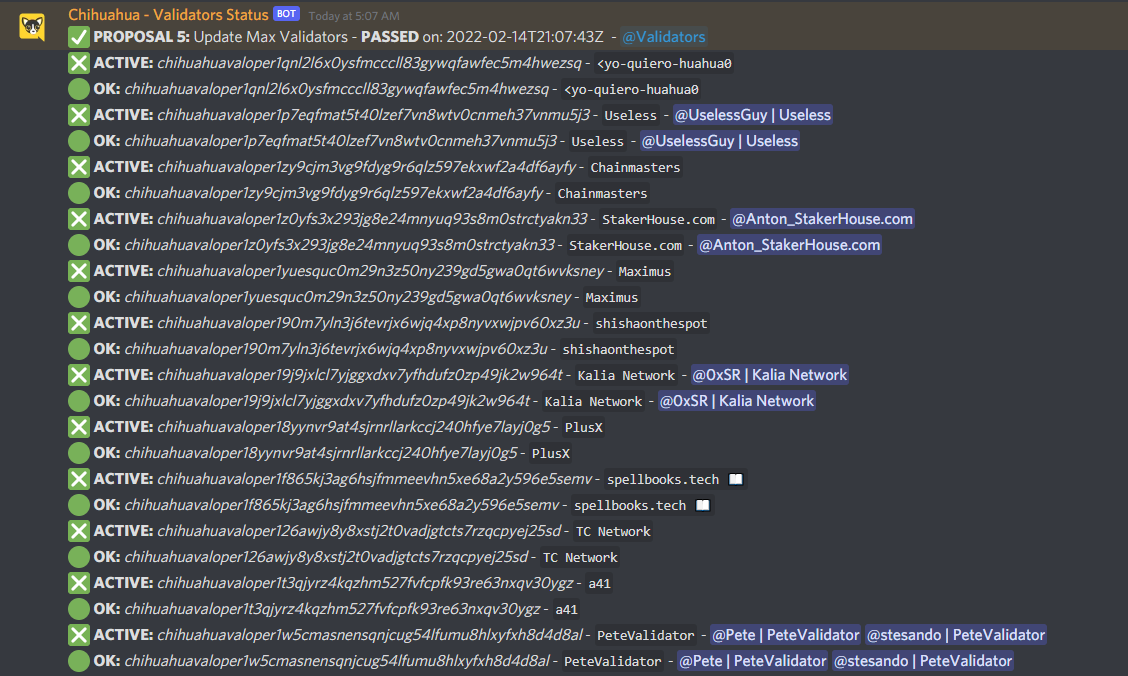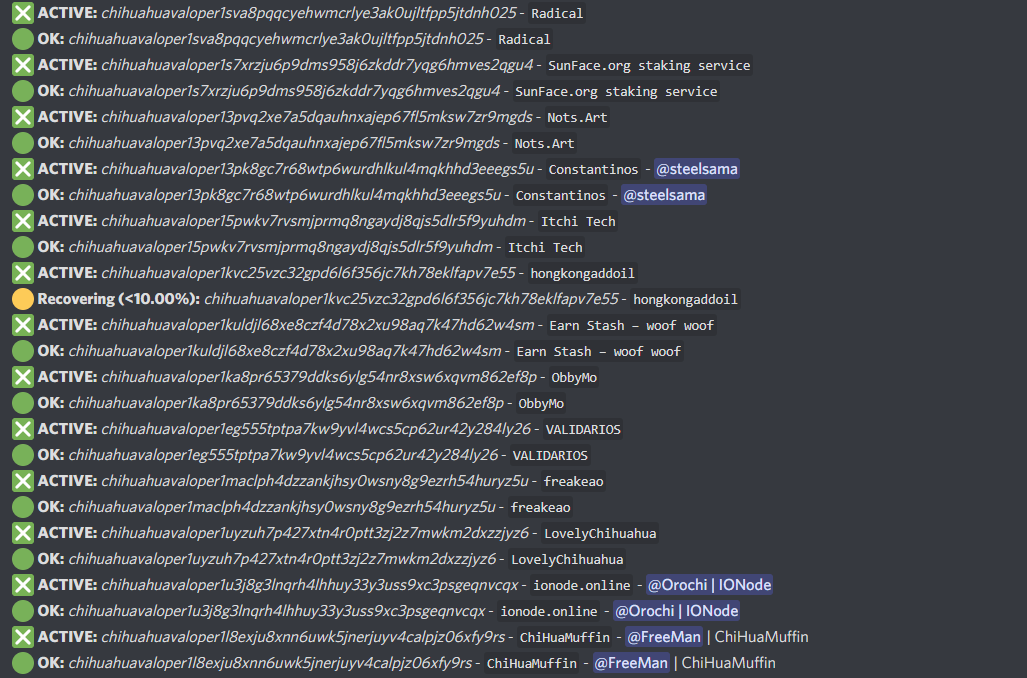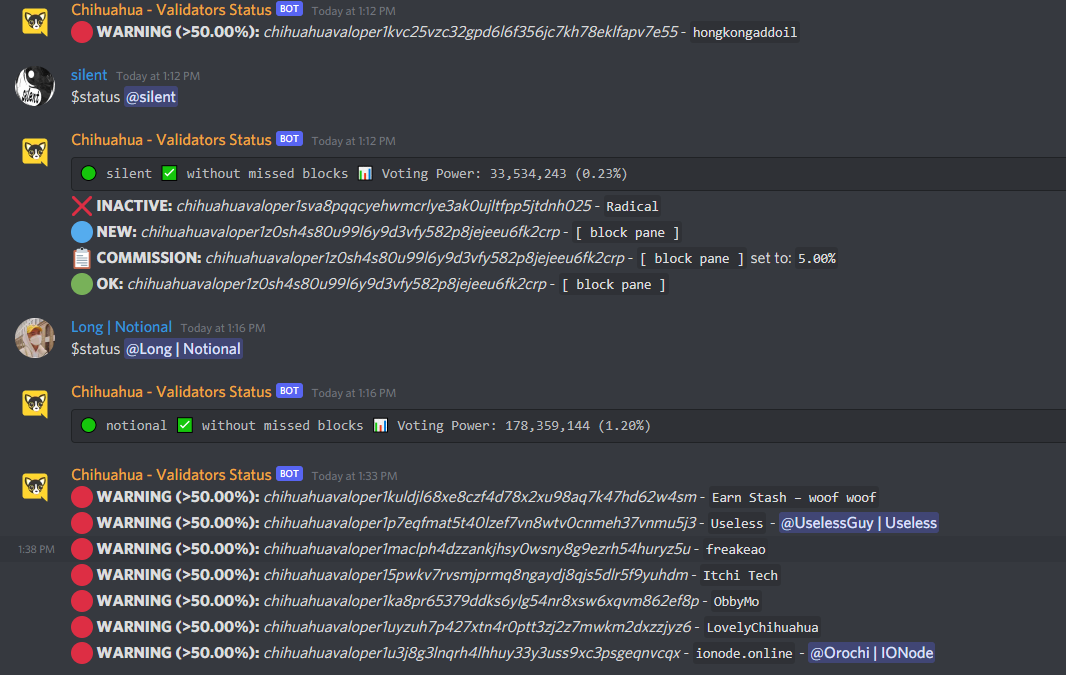Chi Doll Chain Governance | After Motions 5 and 6 are passed
Motion 5 was finally passed amid the controversy, and the total number of verifiers for Chi Dolls rose to 125. Motion 6 was passed miraculously, and the Community Fund has distributed 4.2 million HUAHUA to the relevant wallets. The passing of the two motions also makes me feel very unfortunate. However, the reasons for the passing of the two motions and their effects are completely different. Let me explain.
But before explaining, please understand the process of passing a proposal. For details, please refer to Daisy's article on the proposal, voting and execution of the LikeCoin proposal . Although the article talks about Likecoin, the governance of each chain is basically the same in the Cosmos ecosystem. of.
1. Motion 6 has been passed
Let’s talk about Motion 6 first. For details, please refer to this article . Proposal 6 is a proposal for the use of community funds. Once passed, it will be distributed to the designated wallet. The following picture is the final voting result:

Agree: 35.73%
Against: 22.15%
No with Veto: 1.69%
Abstaining: 40.43%
Result: passed
Why does the motion still pass because the majority of the votes abstained?
To quote Daisy's article:
All delegates participating in the voting of the proposal account for 40% or more of the total delegation to vote, that is, to reach the legal voting rights, and after deducting abstentions, more than 50% or more of the votes must support the proposal to pass the threshold. This practice is called Simple majority for the simple majority. So here is the second condition of passing the bill if 50% of the 40% who have voted voted for it.
The number of votes for No with Veto was also insufficient, so the motion passed smoothly.
Reasons for abstention:
Many validators at the top also chose to abstain from voting, believing that this issue is best left to the community to decide.
result:
4.2 million HUAHAU went to the address chihuahua18qpryc2jgwcx7xaw7j7ze6cfausvf4hmdvjg4t.
Comment:
does it worth? I definitely don't think it's worth it. Many community members who are active on Discrod do not understand why it passed. It can only be said that there are only a few in Discord. 4.2 million HUAHUA can do a lot. I think 4.2 million HUAHUAs are used by community members, which is much better than letting people modify parameters and UI.
However, this is the result of everyone's vote and must be respected. Some people say that many HUAHUA holders voted "yes" when they saw a motion. Although I don't dare to agree, I can't deny that this result makes people feel similar. And the people who say these things are community activists. The passage of this motion undoubtedly broke their hearts. Will it have any impact on the development of HUAHUA in the long run? Time to tell.
On the DAO side, some members have noticed this situation, and I believe they will also actively pay attention and think about countermeasures.
If you are interested in paying attention to the direction of the 4.2 million HUAHUA, you can follow the payment address and follow the flow of funds. Now the 4.2 million HUAHUA remains intact.
As far as the results are concerned, this motion has no real impact on HUAHUA, and the biggest impact should be to disappoint some activists.
2. Motion 5 has been passed
Proposal 5 (discussed in an earlier article, Portal ) was finally passed with great controversy, and this proposal was a Parameter Change proposal. The moment the proposal was passed, the validator limit was immediately increased to 125. The voting results are as follows:

Agree: 57.00%
Against: 38.63%
No with Veto: 0.13%
Abstaining: 4.24%
Result: passed
Key votes passed:
In the 24 hours leading up to the vote, the ratio of yes and no had been only two to three percentage points apart. But when the validator Cosmostation voted in favor, it floated to 56%, and then the dust settled.
After passing:
After passing, the number of validators will immediately increase by 25. Since there are more than 140 validators on the HUAHUA chain, validators ranked 101-125 went live immediately. But about ten validators did not pay attention to the relevant proposals or were not ready. In the beginning they were all out of sync with the chain.


After 8 hours, the part is still not online:

After 16 hours, the Offline penalty mechanism is activated:

Effects after passing:
First of all, with 25 more validators, there are more choices for delegators. The Chi Doll chain is a very attractive chain. Two days after the proposal was passed, all validator positions were filled. There are some new validators that have been validating on other chains, and some quality new validators have appeared! This is very good.
Second, the chain's block production has experienced some instability. The Block time in recent days has also kept floating. This is normal though, every time a validator goes up, the chain takes some time to adapt. Unfortunately, Block time has inevitably risen. From 6.02 seconds before the promotion of validators to 6.13 seconds today. Expect to eventually rise to about 6.3-6.5 seconds.
The increase in block time will reduce the interest of the pledge. Because the interest is distributed to each delegator proportionally when each block is produced. Although the current inflation rate remains unchanged due to the distance between the number of pledges and the target parameters, but due to the increase in block production time, the final annual production of blocks will decrease, and the annual interest rate will decrease. You can see that the Staking APR is 386% on the Cosmostation mobile app, but when you press to see with real block time, you will see that it is 331.54%. The difference is due to the fact that more blocks were originally estimated to be produced in the whole year than are actually produced at present (if you are interested, you can read this article for details ). However, since increasing the number of validators is a consensus, everyone must accept the result.
Comment:
One of the problems with Motion 5 is that the content of the motion is misleading. Is boosting validators really more decentralized? Is the chain more healthy?
Let’s talk about decentralization first. At present, the voting power of 50-125 validators is about the same as that of the first-ranked validators, so there is no big change from before the promotion. The top 29 validators account for 80% of the delegation. The top 5 validators account for more than 33% of the delegation. Such a trend has emerged since the validator Jabbey proposed #8020Giveaway. Therefore, I can't see for the time being that increasing the validator is really more decentralized.
The health of the chain is temporarily invisible and needs to be proved over time.
Another concern is that some validators have the power to change the voting results. Whether the proposal can pass this time depends on the vote of the validator Cosmostation. If they vote for it, they will pass, and if they vote against it, they will not pass. This reflects the problem of insufficient de-neutralization. And such a vote would also be questionable because they voted against a similar motion on another chain. Of course, it is not easy to draw a conclusion, because Stargaze is executing the upgrade at the same time, so the mainstream opinions are all against it, but they are the power holders, which will naturally allow the dissatisfied people to point their finger at them.
As a stakeholder, what we can do is to disperse our HUAHUA among different validators to avoid validator dominance and avoid related disputes. What I see is not that there is anything wrong with their vote, what is really worth paying attention to is the fact that "their vote is super influential" . If we want to be truly decentralized, we must avoid raising these super-validators.
Regarding block production, the validators have already started to propose parameter modification proposals to synchronize the theoretical APR with the actual APR again, but we still need to wait a little longer for HUAHUA to stabilize and then calculate the appropriate parameters.
Epilogue
In the end, although some validators who did not support the writing of the proposal and raised 25 places at one time but finally supported the proposal said that raising 25 places will not kill HUAHUA, and the situation on the chain these days also reflects HUAHUA is still going strong. But I dare not ask, when both Motions 5 and 6 can be passed like this, are there any other motions that cannot be passed? If the next proposal is that the proposer proposes to send money to the proposer, will this pass?
After the passage of these two bills, I think the most important thing is not whether they voted against or in favor, but whether each delegator has learned the importance of participating in voting. Because every vote we make can affect the value of this coin. Of course, I don’t care about each chain, but I will pay attention to whether the validator I entrusted votes in the same direction as me in the early stage of staking, and whether the validator reports his voting intention to ensure that the validator can represent me . If not, it will switch to another validator.
Last but not least, I hope that every HUAHUA holder will enjoy this waste coin together.
(Postscript: The content of this article is written at will, and there is no good context. If you think of something you want to ask or know, or I am not clear, please leave a message and tell me, I will try to answer it properly)
Like my work? Don't forget to support and clap, let me know that you are with me on the road of creation. Keep this enthusiasm together!


- Author
- More